These 7 Foods Will Help Keep Your Cholesterol in Check
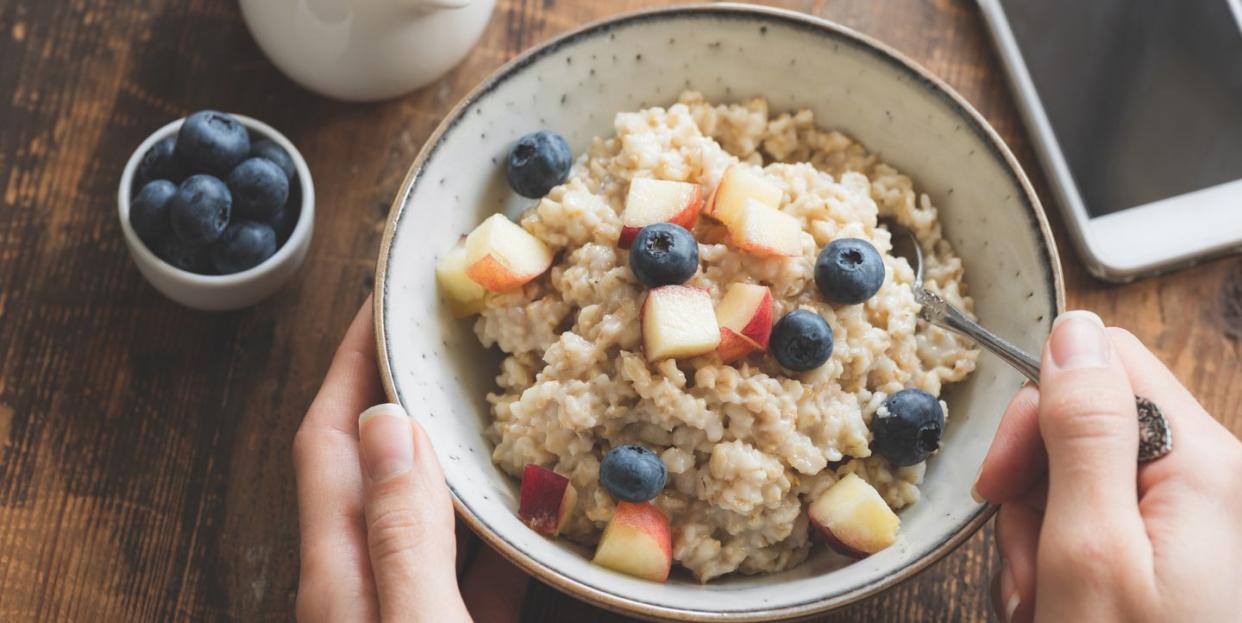
Healthy runners probably don’t lend much thought to cholesterol numbers. But more than 12 percent of American adults over the age of 20 have high cholesterol (levels greater than 240 mg/dL), according to the Centers for Disease Control and Prevention (CDC)—another 95 million people have borderline high total cholesterol levels. And since there are no direct symptoms associated with elevated cholesterol, you could very well be running around with levels that might be putting your long-term health at risk.
It’s easy to assume that high cholesterol is an issue that only affects an older population. But the reality is that more people in their 40s and younger are seeing their cholesterol numbers creep up, especially as overweight and obesity levels continue to rise. Below, we explain what cholesterol is and what runners can do to keep it in check.
What Is Cholesterol?
Cholesterol itself isn’t a villain: This waxy, fat-like substance is made by your body and is also present in animal-based foods like dairy and beef. We use it for several vital bodily functions—including making hormones and in the production vitamin D. But when levels get too high, deposits can accumulate in your blood vessels leading to blockages that spiral into health concerns such as heart attack and stroke.
There are two main types of cholesterol you need to know about: Low-density lipoprotein cholesterol (LDL) is typically referred to as “bad” cholesterol, because it is the type that tends to build up in our arteries causing a narrowing that restricts blood flow and eventually leading to a heart attack or stroke. The lower your LDL cholesterol number, the lower your risk is to develop those health issues.
There’s also high-density lipoprotein (HD) cholesterol, which is typically referred to as “good” cholesterol. This type acts as a clean-up crew by shuttling cholesterol back to the liver, which then flushes it from the body and, in doing so, keeps it from building up as plaque in your arteries. Higher levels of HDL cholesterol are desired, since it will help slash your risk for cardiovascular disease.
When your doctor draws blood from you to check your cholesterol levels, he or she will also likely measure triglycerides—a type of fat found in the blood that can also gunk up your arteries when it’s circulating in too high numbers.
Sometimes, you really can’t blame yourself for having high cholesterol. Some people inherit genes from their parents that cause elevated numbers—a condition called familial hypercholesterolemia.
But in many cases, lifestyle choices including exercise and diet play a huge role in helping keep cholesterol in check. A study published in JAMA found that a diet emphasizing known cholesterol-lowering foods resulted in a greater drop in LDL numbers over six months in adults than a diet geared toward simply reducing saturated fat intake. Plus, a report in the Journal of American College of Nutrition demonstrated a link between diet quality and nutrition-related biomarkers including HDL and total cholesterol. The better you eat the better the numbers.
Best Foods to Help Lower Cholesterol
To keep the cardiologist at bay, here are seven cholesterol-busting foods that you can add to your grocery list the next time you go shopping.
1. Nuts
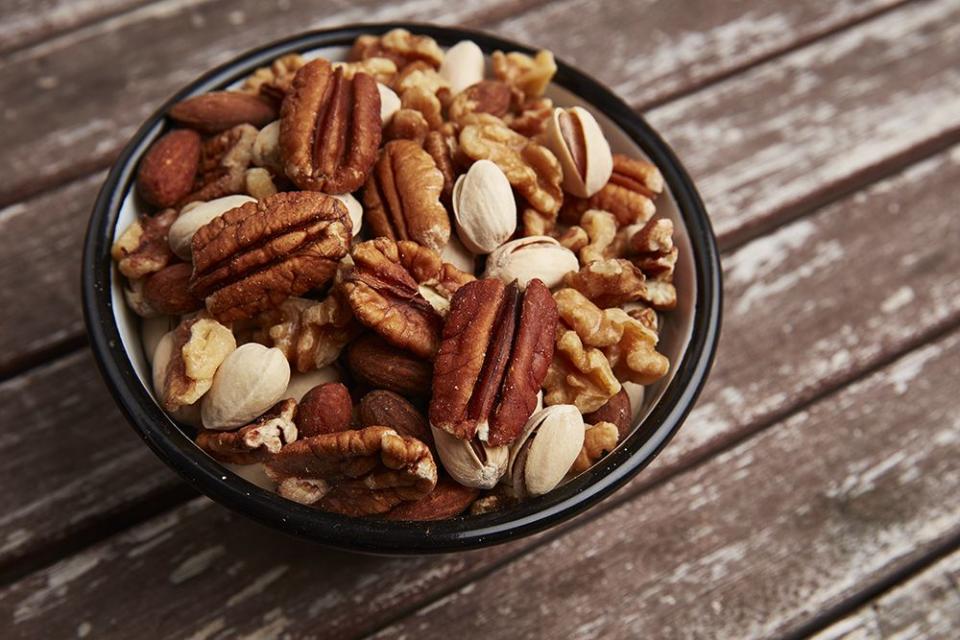
There is a good reason to go nuts for eating nuts. A recent study in the American Journal of Clinical Nutrition that reviewed previously published research found regularly consuming pistachios and walnuts is an effective dietary strategy for trimming down LDL, total cholesterol, and triglyceride numbers, making them ticker-friendly.
Similarly, researchers at Tufts University suggest that crunching our way through 1.5 ounces of almonds daily, compared to eating no almonds, can help lower risk factors for cardiovascular disease, including LDL and total cholesterol.
“Nuts contain a high percentage of monounsaturated fatty acids and polyunsaturated fats, which have been proven to reduce the amount of harmful LDL cholesterol in the bloodstream,” says board-certified sports dietitian Jennifer O’Donell-Giles. “Monounsaturated fats are also anti-inflammatory and reduce the extent to which cholesterol adheres to artery walls causing reduced blood flow.”
You can snack on a handful of these nuts and also toss them onto yogurt, salads, and oatmeal. But don’t lose sight that nuts are calorie-dense—a single ounce of almonds has about 160 calories—so it’s best to cap your daily portion at 2-ounces. However, O’Donell-Giles stresses that recommended quantities depend largely on an individual’s needs and goals. So if you’re logging a lot of weekly miles, you likely can get away with crunching your way through more nuts. (Consult your doctor or sports dietitian for a more individualized diet plan.)
2. Quinoa
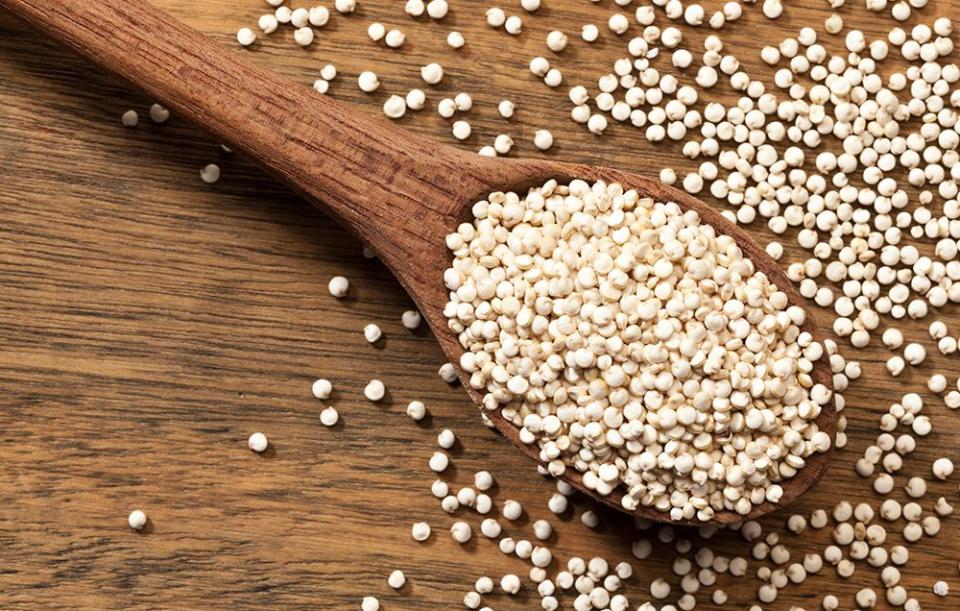
When it comes to the carbs you eat to fuel your miles, be sure to choose options like quinoa that deliver the whole nutritional package. Using data from more than 5,000 adults, researchers discovered that people who ate more whole grains like quinoa, brown rice, and whole-wheat pasta over 12 months experienced a drop in their triglyceride numbers and an increase in HDL cholesterol levels as opposed to those who ate more refined carbs.
“Whole grains are high in fiber, specifically soluble fiber, which acts like a sponge soaking up free-floating cholesterol in the bloodstream and carrying it out of the body, thereby playing a crucial role in the reduction of blood cholesterol,” says O’Donell-Giles.
3. Apples
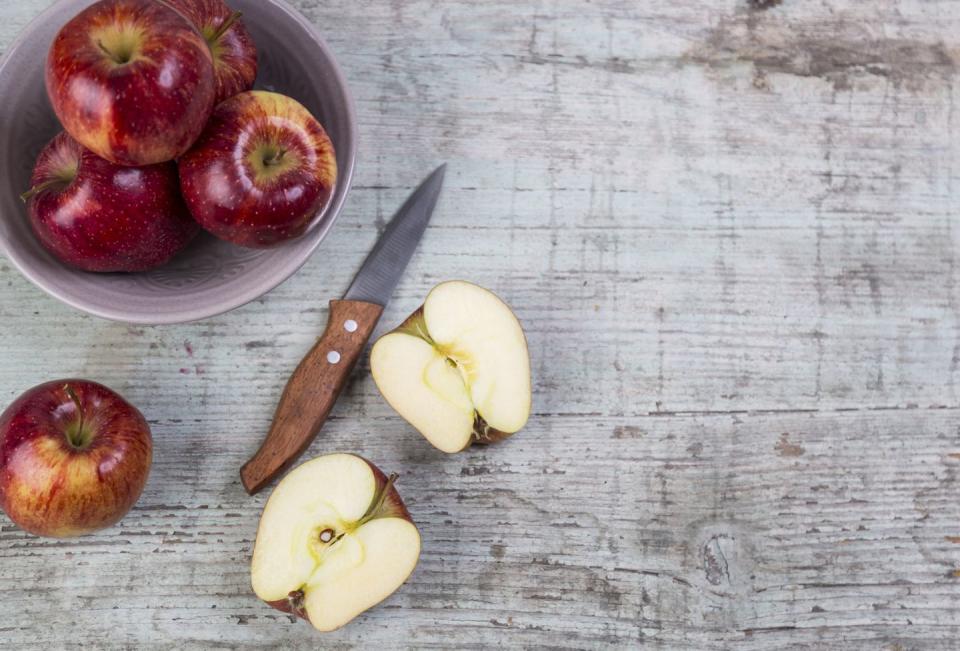
The old saying “an apple a day keeps the doctor away” seems to hold water. Well, at least if you bump it up to two fruits daily. In a 2020 American Journal of Clinical Nutrition study, 40 participants with mildly high cholesterol who consumed two apples each day for two months experienced some improvements in a handful of cardiovascular disease risk factors— including reducing total and LDL cholesterol levels. No improvements were measured when a calorie-matched beverage was consumed. The study authors believe that the dynamic duo of antioxidants and fiber in the crispy fruit are behind these heart-friendly benefits.
4. Tofu
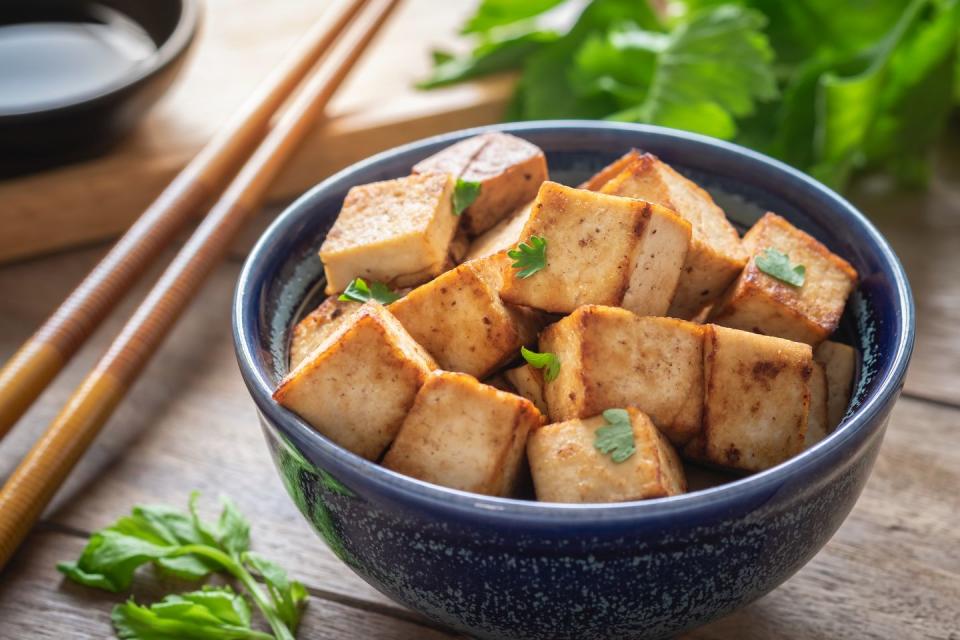
To keep your heart pumping strong, consider embracing the trend of plant-based eating. Research shows that higher intakes of plant proteins such as tofu, lentils, and seeds can bring about improvements in heart health measures including lowering levels of both total and LDL cholesterol. On the other hand, eating more red meat can drive up triglyceride numbers.
“The more plants we consume, the higher our fiber intake is, and as a result, the lower cholesterol levels will be,” O’Donell-Giles says.
Plant-based proteins are also naturally lower in saturated fat, and this could help keep cholesterol numbers in the healthy range. But you don’t need to ditch meat completely to get the benefits. Just try to wedge more room in your diet for proteins from the vegetable kingdom, including beans and tempeh.
5. Oats
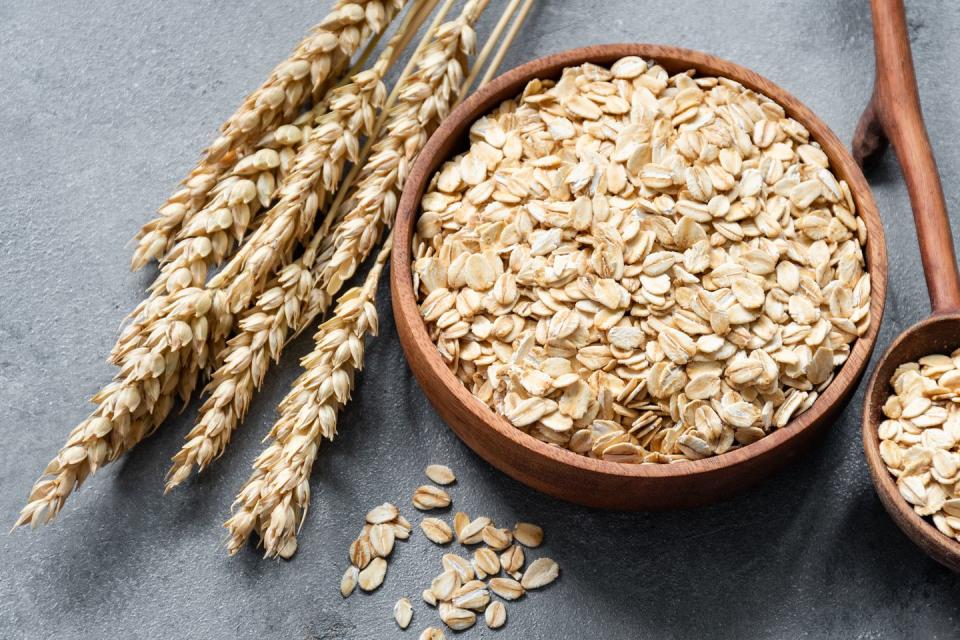
The heralded cholesterol-lowering effect of oatmeal has largely been attributed to its lofty amount of beta-glucan. “Beta-glucan is a form of soluble fiber that absorbs LDL [cholesterol] and shuttles it from the body, while also lowering triglyceride production,” says O’Donell-Giles.
Current nutrition guidelines recommend getting at least 5 to 10 grams of soluble fiber, including beta-glucan, each day. (The average American likely gets about half that amount.) People often don’t realize that the weight loss associated with higher fiber diets can be enough to drive down cholesterol. There is evidence that less processed forms of oat-based foods, such as hearty steel-cut oats or even old-fashioned rolled oats, are more effective at lowering cholesterol than if you just consumed isolated beta-glucan that is added as an ingredient to a packaged food.
6. Avocado
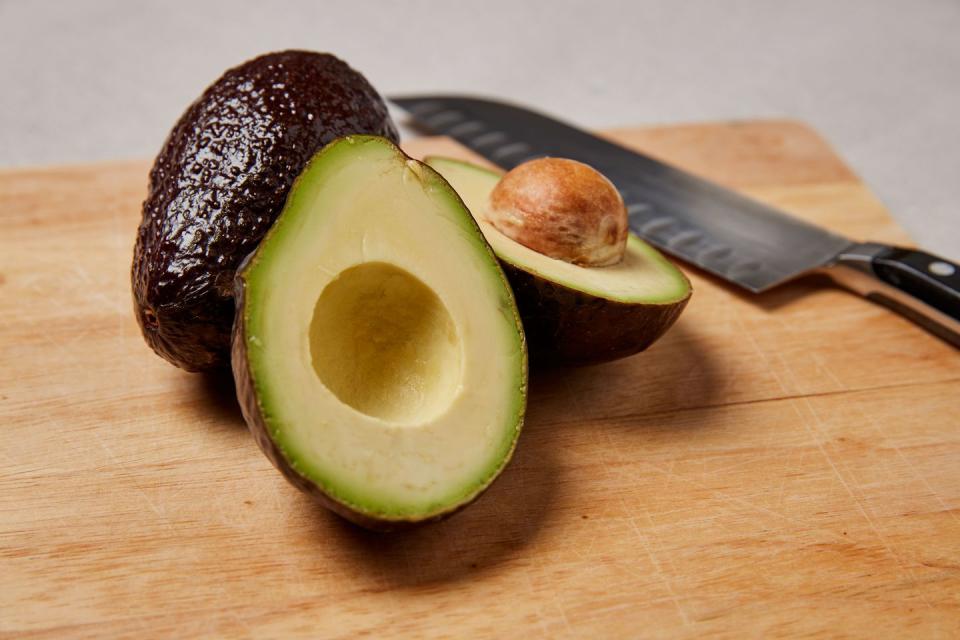
A report in the Journal of Nutrition showed that adults who included one avocado in their diet each day for five weeks had lower levels of oxidized LDL cholesterol than when no avocado was consumed. This comes on the heels of other research that found the trendy fruit can help tamp down total cholesterol and triglyceride levels, especially if it’s fat that replaces saturated fat from foods such as beef and coconut. The nutritional heft of avocado, which includes monounsaturated fat, dietary fiber, and antioxidants like lutein, makes it a cholesterol crusher.
7. Blueberries
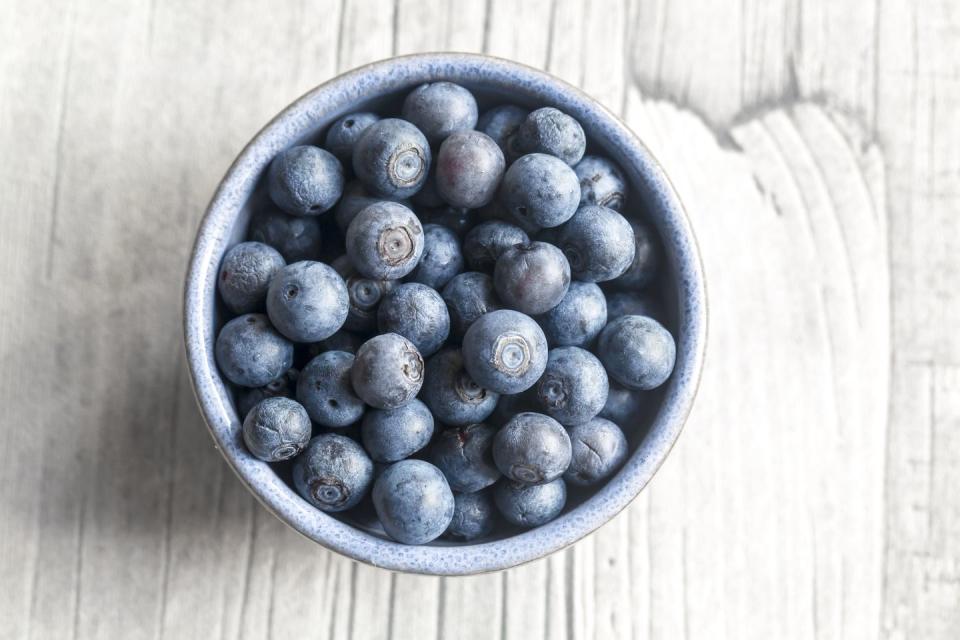
Higher intakes of anthocyanins—potent antioxidants found in deeply colored fruits including blueberries, blackberries, dark grapes, and cherries—have been found to boost HDL cholesterol numbers while simultaneously trimming LDL numbers. That’s because anthocyanins have the power to reduce the activity of CETP, a type of protein that transfers cholesterol from HDL to LDL molecules—which is not a desirable outcome. So blend berries into your postrun smoothies, toss more of them on your cereal and yogurt, and use them to add a punch to green salads.
You Might Also Like

